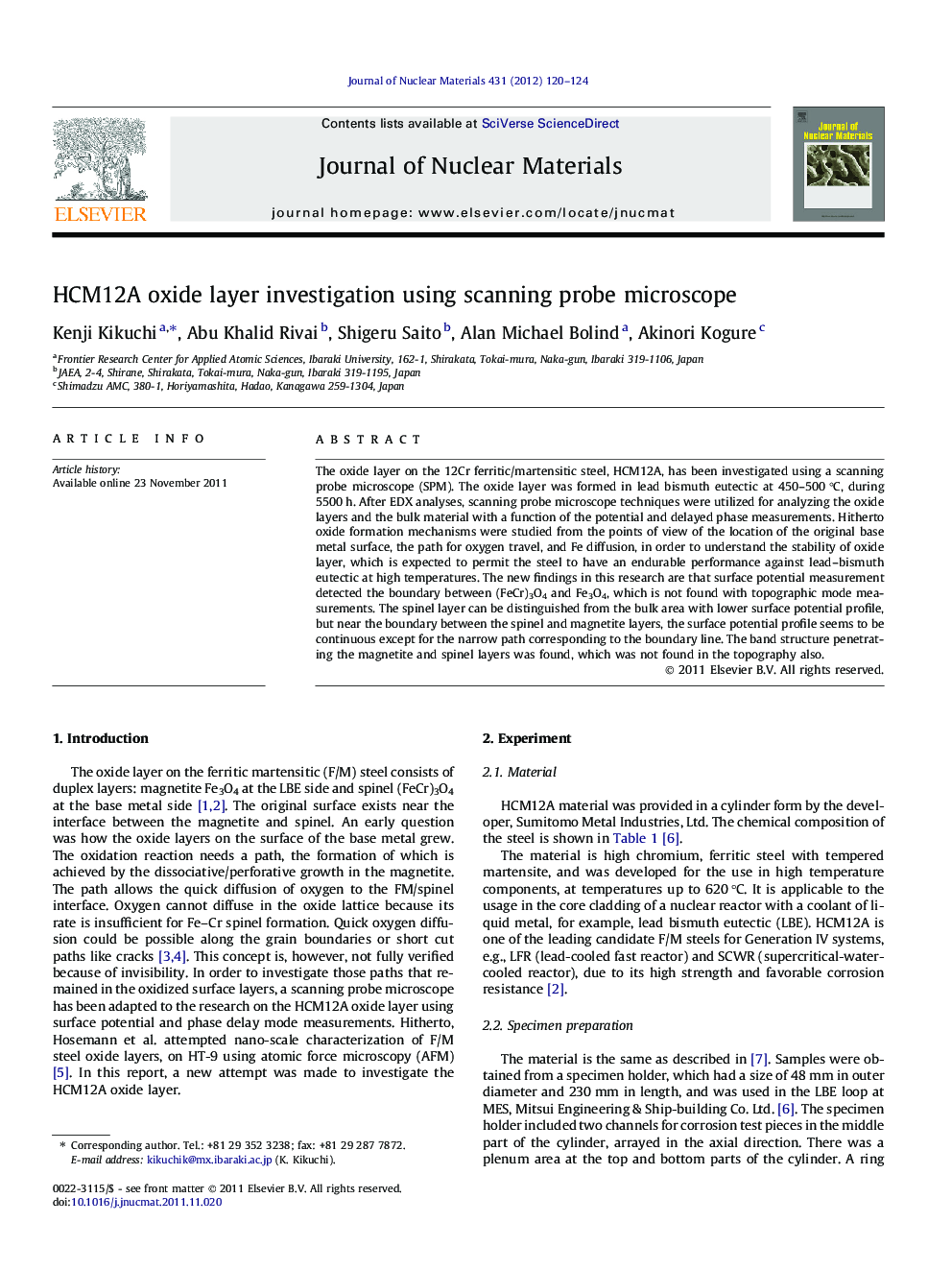| Article ID | Journal | Published Year | Pages | File Type |
|---|---|---|---|---|
| 1565911 | Journal of Nuclear Materials | 2012 | 5 Pages |
The oxide layer on the 12Cr ferritic/martensitic steel, HCM12A, has been investigated using a scanning probe microscope (SPM). The oxide layer was formed in lead bismuth eutectic at 450–500 °C, during 5500 h. After EDX analyses, scanning probe microscope techniques were utilized for analyzing the oxide layers and the bulk material with a function of the potential and delayed phase measurements. Hitherto oxide formation mechanisms were studied from the points of view of the location of the original base metal surface, the path for oxygen travel, and Fe diffusion, in order to understand the stability of oxide layer, which is expected to permit the steel to have an endurable performance against lead–bismuth eutectic at high temperatures. The new findings in this research are that surface potential measurement detected the boundary between (FeCr)3O4 and Fe3O4, which is not found with topographic mode measurements. The spinel layer can be distinguished from the bulk area with lower surface potential profile, but near the boundary between the spinel and magnetite layers, the surface potential profile seems to be continuous except for the narrow path corresponding to the boundary line. The band structure penetrating the magnetite and spinel layers was found, which was not found in the topography also.
